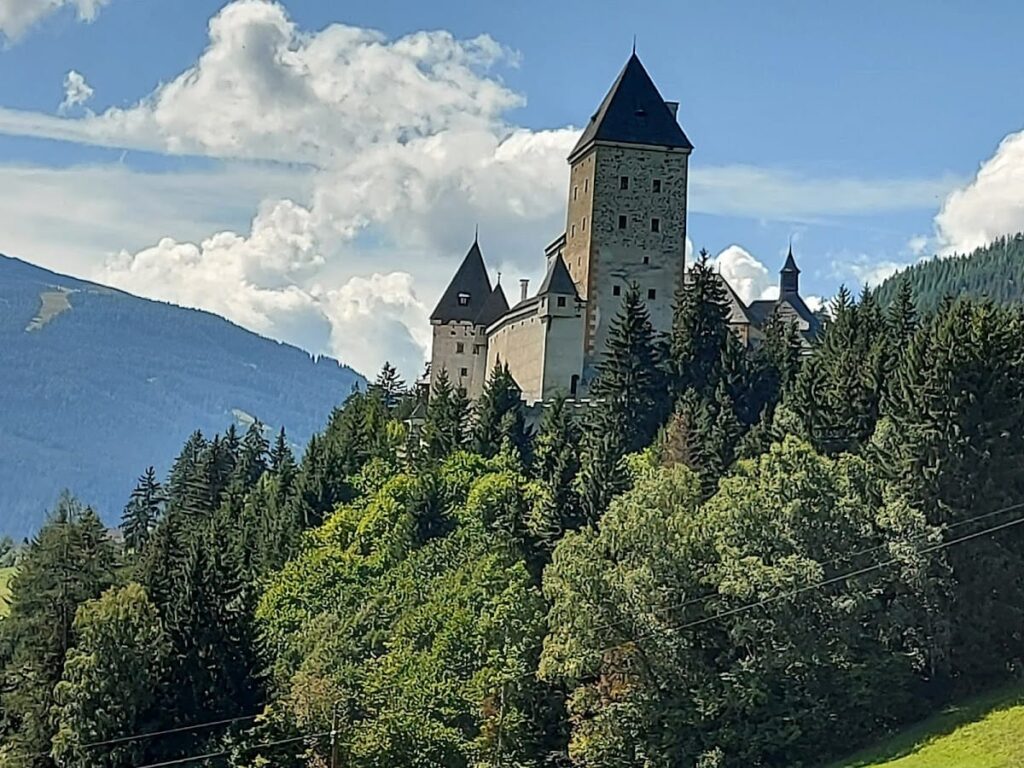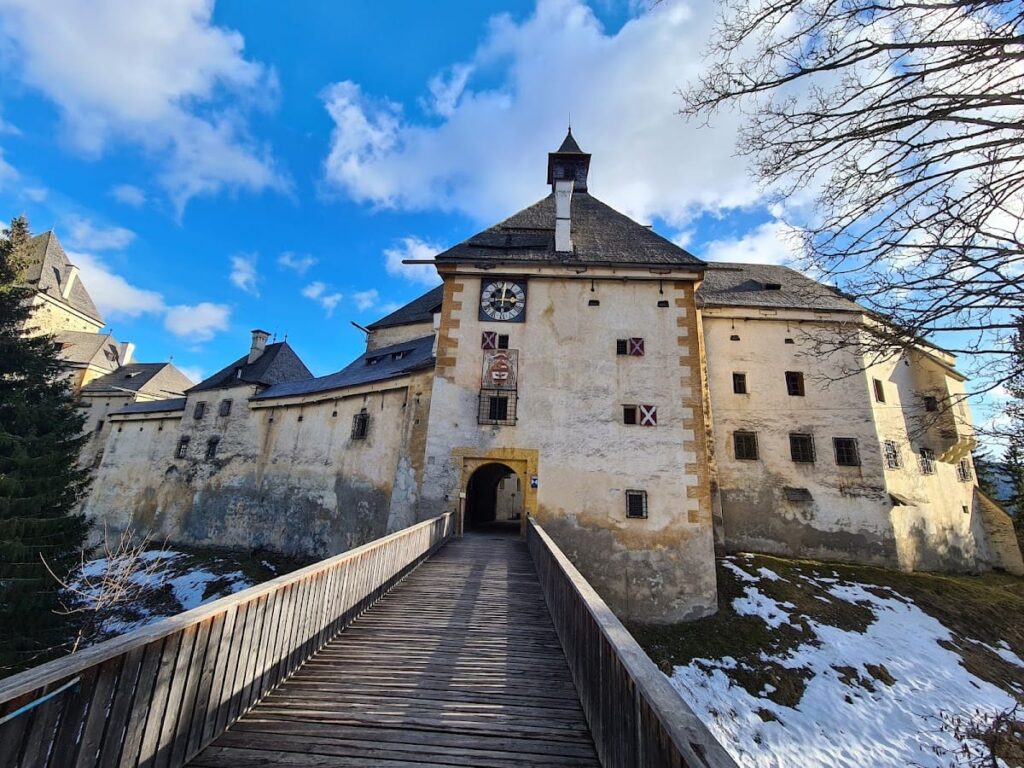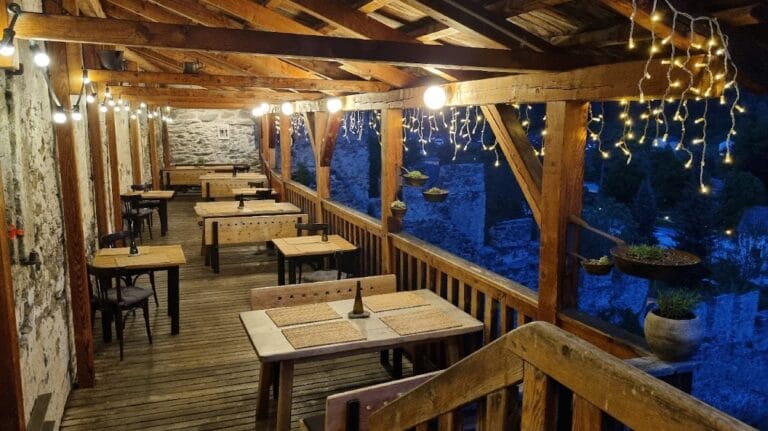Moosham Castle: A Historic Fortress in Salzburg, Austria
Visitor Information
Google Rating: 4.4
Popularity: Low
Google Maps: View on Google Maps
Official Website: www.schlossmoosham.at
Country: Austria
Civilization: Medieval European
Remains: Military
History
Moosham Castle stands in Unternberg, within Austria’s Salzburg region, on a site with roots reaching back to Roman times. Archaeological discoveries in 1950 revealed remains of a Roman settlement and a temple dedicated to the god Mithras beneath the castle grounds. Two Roman roads once branched nearby, connecting to the main route toward Katschberg, indicating the area’s early strategic importance.
The castle itself emerged by the 12th century, with the Moosheim ministerial family first recorded in 1191 through Otto von Moosheim. By 1213, the Lungau region, including the castle, came under the control of the Archbishopric of Salzburg, following a transfer by Emperor Frederick II. The castle was explicitly mentioned in documents from 1256, by which time it had expanded into an older and a newer section. In 1285, the Moosheim family was expelled after accusations of disloyalty and property invasion by Archbishop Friedrich von Walchen. Despite this, the castle remained a key administrative and judicial center, with noble families such as the Kuenburger, Tannhäuser, Keutschach, and Grimmings appointed as governors by the archbishops.
In 1479, the castle briefly fell under the control of King Matthias Corvinus’s army. Later, during the 1526 peasant war, it was occupied by revolting peasants. Starting in 1516, Archbishop Leonhard von Keutschach initiated a modernization and expansion project that lasted until 1577, shaping the castle’s present form. The castle also served as a summer residence for Salzburg’s archbishops and became infamous in the 17th and 18th centuries as a site for witch trials, which often ended in death sentences.
The castle’s keep, known as the Witch Tower, was removed in 1722 and partially rebuilt with two rooms and a vault. Between 1790 and 1910, the castle chapel was desecrated but later reconsecrated. The judicial court moved away in 1790, after which the castle declined and was sold. In 1858, Franz Neuper acquired the property, followed by Count Johann Nepomuk Wilczek in 1886. Wilczek undertook extensive restorations, including rebuilding the keep and furnishing interiors with his collections. Since 1892, the castle has remained in the Wilczek family. It survived both World Wars and underwent further restorations in the 20th century. In 1993, Austria designated Moosham Castle as a protected historic monument.
Remains
Moosham Castle is the third largest in Salzburg and consists of two main parts: the older Lower Castle and the Upper Castle, which was renovated in the 16th century. The original drawbridge was replaced by a stone bridge. Entry to the Upper Castle courtyard is through a large arched portal and a barrel-vaulted passage.
A prominent three-story guardhouse displays the coat of arms of Archbishop Hieronymus Prince Colloredo, Salzburg’s last prince-bishop. The courtyard’s east side features a large granary with a vaulted basement and a larch wood ceiling supported by beams measuring 28 meters in length. This granary was later converted into a museum space for carriages and sledges by Count Wilczek. The other three wings of the courtyard housed offices and residences for custodians.
The castle chapel, accessible from the courtyard, contains frescoes attributed to Gregor Lederwasch, depicting the 14 Stations of the Cross and the 12 Apostles. Its late Gothic altar originated from Hamburg, and the pipe organ was brought from Pettenegg Palace. Fifteenth-century stained glass in the apse came from a small church near Leoben. Although desecrated between 1790 and 1910, the chapel has since been reconsecrated.
Within the noble residential area, the great dining hall features a Gothic wooden ceiling and a Salzburg marble fireplace taken from the former Grimming House in Mauterndorf. The hunting hall displays historical trophies and weapons. The princely section includes a writing hall with a ribbed vault supported by a central pillar, decorated with hunting trophies. Paintings and engravings in this area draw inspiration from Dutch and German masters.
On the upper floor of the Upper Castle, the Prince’s Hall and Renaissance Hall preserve original wooden ceilings. The Renaissance Hall’s walls are covered with gold-pressed leather wallpaper and contain a maiolica stove from 1687, originally from Winterthur. The Prince’s Room is paneled in Gothic style and features a maiolica stove assembled in 1726.
Between the Upper and Lower Castles lies a courtyard with wooden battlements typical of Salzburg fortifications. These battlements are attached inside the outer courtyard walls and the zwinger, a defensive outer enclosure, which was reconstructed at the end of the 19th century.
The Lower Castle once housed courtrooms. Above the judge’s seat in the main hall stands a statue of the Madonna and Child dating to around 1440. The walls display a collection including a judgment sword and weapons confiscated from poachers. The castle’s torture chamber preserves some original instruments used during the witch trials of the 17th and 18th centuries.
Situated at 1,113 meters above sea level, the castle lies in a valley surrounded by mixed forest and mountainous terrain. The local climate is hemiboreal, with cold winters and mild summers.










